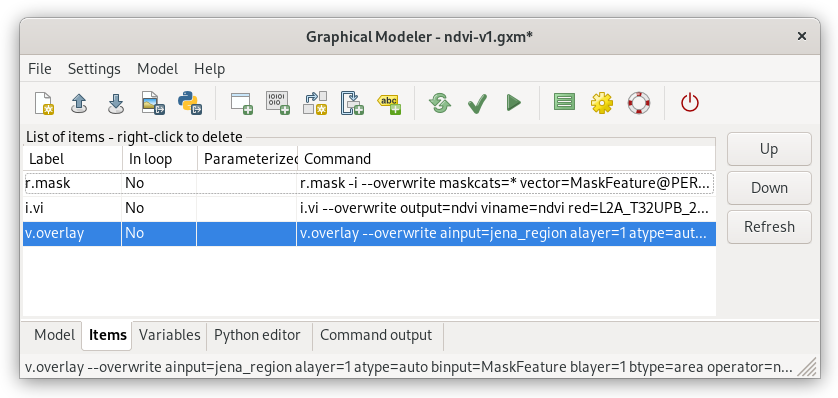

- FOR LOOP IN R WHERE OUTPUT IS LIST HOW TO
- FOR LOOP IN R WHERE OUTPUT IS LIST SOFTWARE
- FOR LOOP IN R WHERE OUTPUT IS LIST CODE
String <-c("apple", "grape", "orange", "blueberry", "plum", "tomato", "pear", "plum")įor each unique ID, I want to write a list collapsing the n rows into a single row containing a concatenated character string based on the information in column "string". The loop is running over a df structured as below, where each unique ID is represented by 1 to n rows: id <- c(1, 2, 2, 2, 3, 4, 5, 6) And when the condition becomes false, the line immediately after the loop in program is executed.I'm having trouble outputting the results of a for loop to a list/vector in R.
FOR LOOP IN R WHERE OUTPUT IS LIST CODE
While loop is used to execute code repeatedly until a condition is met. Else clause returns numbers which have no factors and are therefore prime numbers: The program below calculates factors for numbers between 2 to 10. It means that the loop did not encounter a break statement. The else clause executes after the loop completes. Using else clause with for loop is not common among python developers community. In this program, when n is either c or d, loop stops executing. When break statement runs, it breaks or stops the loop. In the code below, we are avoiding letters a and d to be printed.

When continue statement is executed, it skips the further code in the loop and continue iteration. Python supports the following control statements. When execution leaves a scope, all automatic objects that were created in that scope are destroyed. Loop control statements change execution from its normal iteration. See the usage of string format( ) function below - s= "Your Input" The exec( ) function is used for dynamic execution of Python program. The unique( ) function is used to calculate distinct values of a variable. Filter data frame by each unique value of a column and store it in a separate data frame np.where(condition, value_if condition meets, value_if condition does not meet) is used to construct IF ELSE statement.Ĥ. In this example, we are adding new columns named newcol1, newcol2 and newcol3.

Otherwise same as month.ĭf = np.where(df >= 50, If i > 0 and i = 50, multiply each month cost by price. Mylist is equivalent to mylist which follows this syntax style listĮxample 1 : Create a new list with only items from list that is between 0 and 10 Suppose you need to select every 3rd value of list.
FOR LOOP IN R WHERE OUTPUT IS LIST HOW TO
This section covers how to run for in loop on a list. Range(1,10,2) means starts from 1 and ends with 9 (excluding 10), increment by 2. Suppose you are asked to print sequence of numbers from 1 to 9, increment by 2. It is one of the most commonly used loop method to automate the repetitive tasks. Like R and C programming language, you can use for loop in Python.
FOR LOOP IN R WHERE OUTPUT IS LIST SOFTWARE

Loop is an important programming concept and exist in almost every programming language (Python, C, R, Visual Basic etc.).


 0 kommentar(er)
0 kommentar(er)
